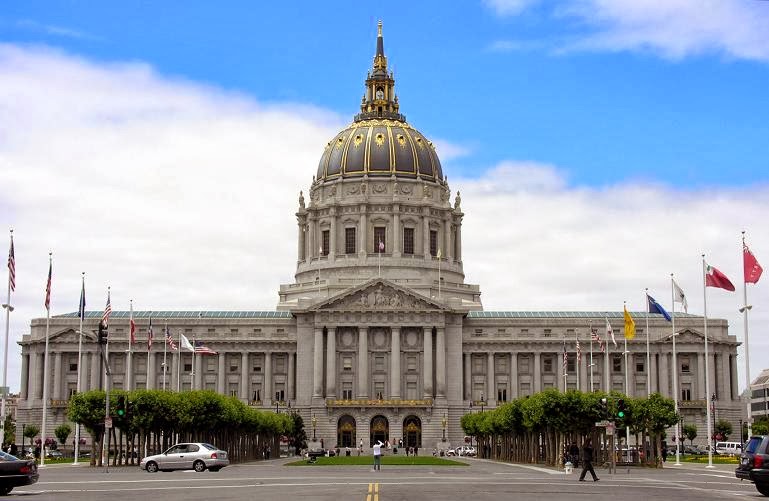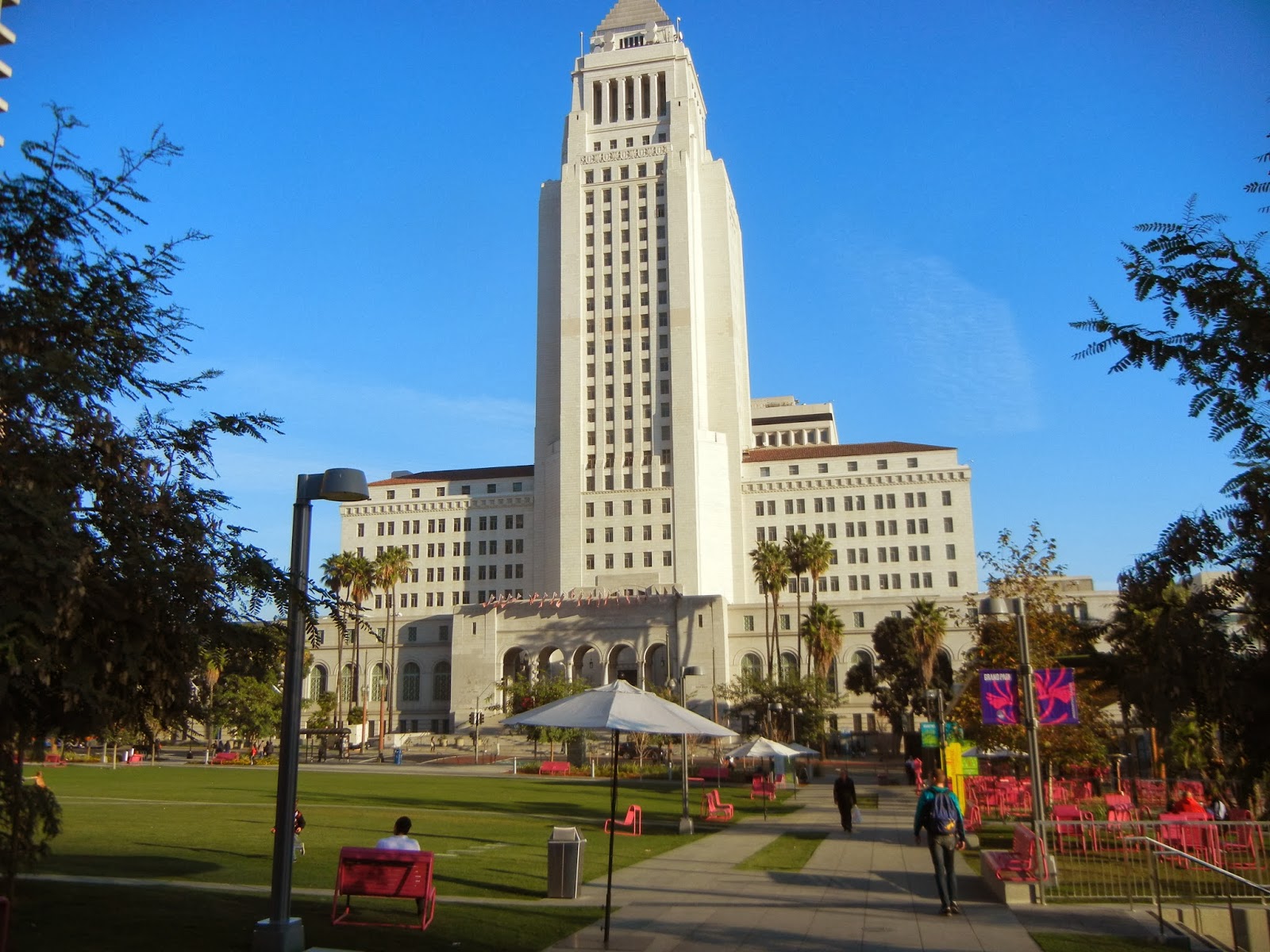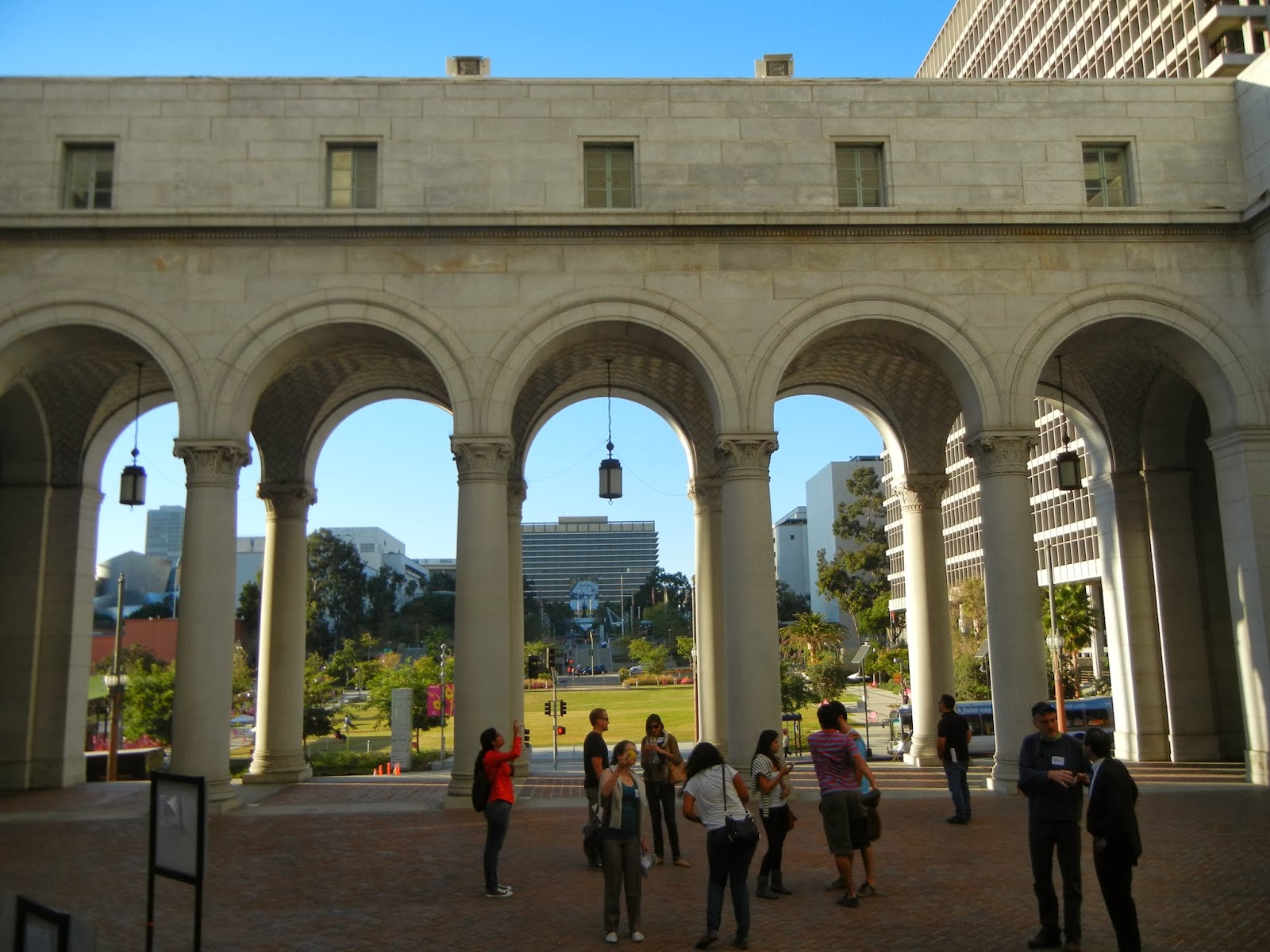Los Angeles isn't known for historic skyscrapers the way New York and Chicago are, but its iconic City Hall is an outstanding exception. For many years it was the standard location establishing shot for films set in Los Angeles, at least until this function was taken over by newer and taller buildings, for example the U.S. Bank Tower. Unlike the City Hall of San Francisco,
 |
| San Francisco City Hall (Wikimedia Commons) |
|
|
which impresses immediately with its dome, neoclassical exterior, and gold accents, its cousin to the south, at first sight, seems rather stark in its overall design, consisting of a blocky lower section of six stories--not including basement and attic--surmounted by the famous tower. There is a colonnaded courtyard on the Spring Street side, but little otherwise in the way of emphatically decorative features.
 |
| City Hall from the east |
Closer up, however, the structure displays a mixture of neoclassical and early art deco elements. The peristyle courtyard on the Spring Street side does add interest and variety, but in terms of design it doesn't truly mesh with the art deco patterns seen elsewhere on the exterior.
 |
From inside the peristyle, looking west
|
By contrast, the upper stories are free from neoclassical appurtenances, and here the expression of 1920s-era modernity is far less compromised.
 |
| City Hall, base of tower |
|
There are no more curved arches, but only straight lines and mostly right angles. To the right of the tower, just the above the tile roof of the lower section of City Hall, the top story of a later annex is visible. This picture was not taken from the best of all vantage points, so it is difficult to tell that we are actually looking at a second building. Strangely, however, the much newer annex building seems to blend right in with the original City Hall building.
Towards the top of the tower, just below the observation deck, we see where the architects began to reduce the width of the tower as one continues to ascend.
 |
| Detail, near top of tower |
The four sided colonnade is perfectly vertical, like the sides of any ordinary building, but is noticeably narrower than the floors beneath it. Although its Ionic capitals and frieze tell us that neoclassical influences were not entirely abandoned, the inward leaning corner posts seem a clear expression of modernity as they lead the eye towards the pinnacle.
From the observation deck, the stonework of the angled corner post creates a dramatic effect as one looks beyond it to the horizon.
 |
| Looking northeast, toward Union Station |
This was the view on a late afternoon; the distant tower is the headquarters of the MTA, which also owns Union Station which is visible in the middle ground.
Looking from the opposite side, although the late afternoon sun makes it difficult to see very much detail, it does contribute to a dramatic result.
 |
| View to the southwest |
It's no civic secret, but most people probably are unaware of the single large hall that exists on the 27th floor, taking up the entire width of the interior.
 |
| The Tom Bradley Room |
Evidently this space can be rented for events of various kinds; recently Cigar Aficionado held a reception here. About two weeks later, when this picture was taken, caterers were preparing for the farewell to a longtime city worker. Our city sales and license taxes at work? They wouldn't be that blatant. Or could they? Perhaps this bears looking into.









